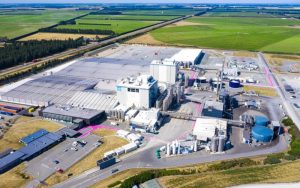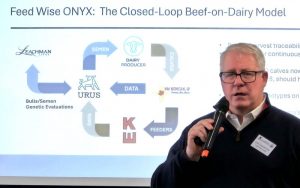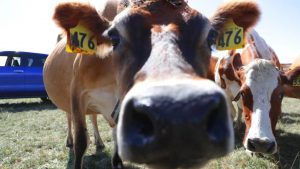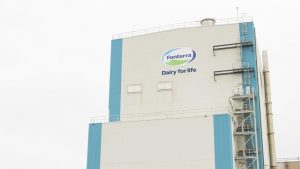
The Council of Agriculture said it is developing isotope distinguishment technology, which, combined with “big data,” would differentiate the production location of dairy products.
The plan was made due to concerns about the impending removal of tariffs for Taiwanese imports of New Zealand beef, lamb and dairy products — as a result of the Agreement Between New Zealand and the Separate Customs Territory of Taiwan, Penghu, Kinmen and Matsu on Economic Cooperation (ANZTEC) — would significantly affect domestic dairy and meat markets, the council said.
ANZTEC, signed in 2013, removed tariffs on a set amount of liquid dairy products — 5,500 tonnes as of 2013 — and adds a charge of NT$14 for every kilogram exceeding that amount.
It was agreed that the allocated amount of tariff-free products would increase by 1,500 tonnes every three years until 2025, when quotas would be removed.
As of last month, Taiwan has imported 103,562 tonnes of dairy products, a 9.2 percent increase compared with the same period last year, the council said.
It also said it plans to encourage domestic dairy quality, match domestic dairy production to market needs and step up measures to distinguish local and imported dairy products.
Over the past decade, domestic dairy production has increased from 320,000 tonnes to 430,000 tonnes, the council said.
Due to high domestic demand, dairy farmers have been known to produce amounts exceeding the quota, and contracted processing companies have been more than willing to purchase the excess, it said.
However, as the domestic dairy market is becoming saturated and the nation’s economic environment is causing public spending to turn conservative, processing companies are demanding that dairy producers observe the output quotas.
There are standard certifications for milk, but they could be improved to differentiate local and imported dairy products, the council said, adding that it is developing a system to do so.
The council said that the system, which has been trialed for two years, has a 90 percent accuracy rate in differentiating the origin country of dairy products, and it can also determine whether milk is fresh or made from powder.
The system is almost complete, and can be used to inspect pork and chicken meat to identify the country of origin, it said, adding that Taiwan would provide product origin information on packaging.
























